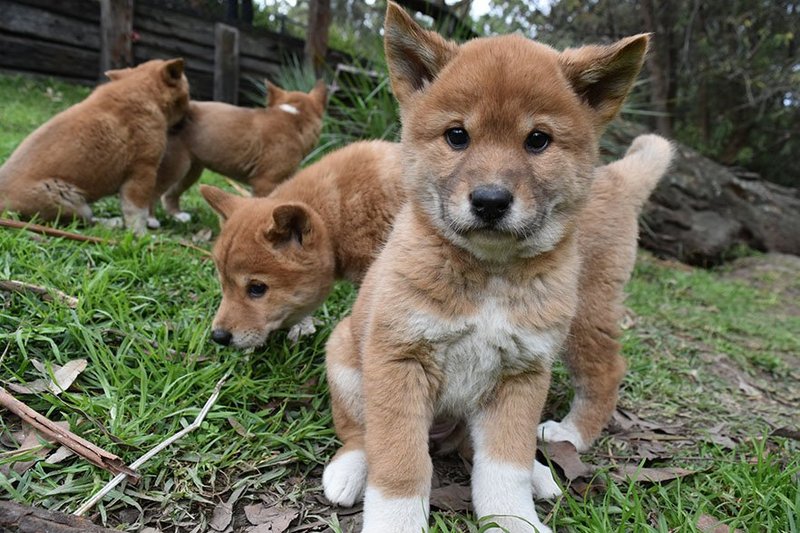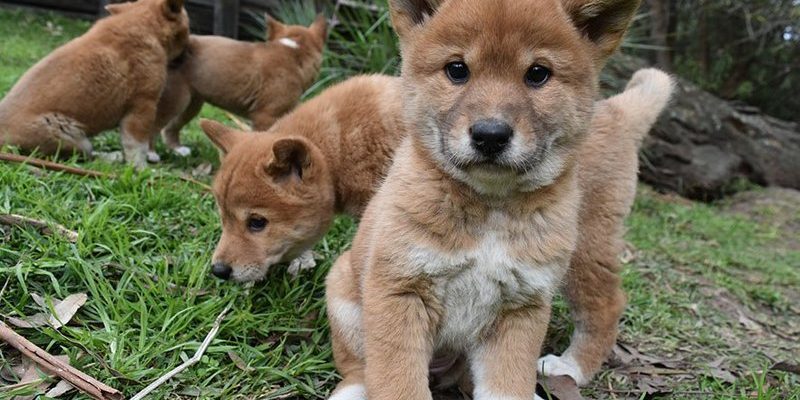
Dingos are fascinating creatures, and their parenting style provides insight into the wild dog’s life in Australia’s diverse ecosystems. Through teamwork, communication, and instinct, dingoes offer their pups a learning experience that’s crucial for survival. Let’s dive into the world of dingos and explore how they raise their young, navigating through challenges and triumphs along the way.
The Dingo Family Structure
Dingo social structures are quite similar to those of human families, comprising a tight-knit unit often referred to as a pack. Typically, a dingo pack consists of a breeding pair, their offspring, and sometimes other adults. The breeding pair, usually the alpha male and female, lead the pack and are responsible for the pups’ upbringing. This close family structure plays a crucial role in nurturing and teaching the young ones how to survive in their environment.
Each member of the pack contributes in some way, whether it’s through hunting and providing food or helping keep an eye on the pups. Honestly, it’s heartwarming to see how they work together. You might be wondering what happens when the pups are born—well, the whole pack comes together to support the new family, ensuring everyone has a role in raising the little ones.
Pup Development Stages
When dingo pups are born, they are entirely dependent on their parents. The first few weeks are particularly critical. Pups are born blind and deaf, and they rely on their mother for warmth and nourishment. The mother dingo will stay close to her den, nursing her pups until they are strong enough to venture out. During this time, she communicates with her mate and the other pack members through soft vocalizations, signaling both the need for food and the safety of the young.
As the pups grow, around three to four weeks old, they begin to open their eyes and start exploring their surroundings. This is when their playful nature starts to emerge. You might catch them tussling and practicing their pouncing skills, which are vital for their future hunting abilities. This playtime isn’t just for fun—it’s a form of learning, teaching them how to interact with their environment and siblings.
Feeding and Nutrition
Feeding dingos is quite a team effort, especially when it involves raising the pups. Dingoes are opportunistic feeders, which means they will hunt whatever prey is available, ranging from small mammals to birds. When it comes to the pups, the mother typically takes the lead in nursing, but as they reach about six weeks of age, things begin to change.
The pack starts introducing the pups to solid food. This usually comes in the form of regurgitated meals from the adults, a kind of “dingo delivery service,” if you will. It sounds a bit gross, but for the pups, it’s a chance to experience new tastes and textures. Honestly, it’s a smart move; this gradual introduction to solid food helps them transition smoothly from nursing to hunting on their own later in life.
Learning Critical Survival Skills
As the pups grow older, learning becomes essential. Dingos train their young in the art of hunting and survival in their harsh habitat. One of the first skills they master is teamwork. Pups often watch their parents and older siblings during hunts, absorbing valuable lessons about stalking and ambushing prey.
It’s fascinating to see how young dingos begin to mimic these behaviors. You might observe them working together in their playful antics, practicing their skills. These moments are not just play; they’re foundational steps toward becoming effective hunters. Additionally, the pack teaches them how to read body language and communicate with each other—important survival skills that will serve them throughout their lives.
The Role of Communication
Effective communication is a cornerstone of dingo family life. Dingoes use a variety of vocalizations, body language, and even facial expressions to express their thoughts and feelings. From gentle growls and howls to subtle tail movements, every gesture conveys meaning. This communication is vital, especially when it comes to the well-being of the pups.
For instance, if danger approaches, you might hear urgent barks to alert the pack. The adults may also use a soft yip or whine when calling the pups back to safety. It’s remarkable how these sounds convey so much information. Having a keen sense of communication ensures that the pups understand their surroundings and can respond quickly to any threats they might face.
Challenges in the Wild
Life in the wild isn’t all sunshine and smooth sailing. Dingos face numerous challenges that can affect the survival of their young. From environmental threats like harsh weather to the risk of predators and human expansion, dingos must remain vigilant. Sometimes, packs may lose pups to accidents or predators, and these losses can be devastating.
Here’s the thing: despite these challenges, dingos have evolved to adapt. They learn from their experiences and adjust their behaviors accordingly. For example, if a hunting area becomes too dangerous, a pack might move to a safer location, demonstrating their flexibility in the face of adversity. This resilience is crucial for raising their young and ensuring the pack’s overall survival.
The Dingo Legacy
As pups mature, they eventually grow into adults, ready to join the ranks of their own packs or disperse to find new territories. This legacy of family bonds and survival skills is what keeps dingos thriving in the wild. Dingoes are not just a part of Australia’s wildlife; they are a testament to the strength of family and teamwork in the face of life’s challenges.
When left to their own devices, dingos can thrive in the wild, but as their habitat continues to change, it’s essential to appreciate their role in Australia’s ecosystem. Understanding how dingos raise their young gives us insight into the delicate balance of nature and helps foster a deeper respect for these remarkable animals.
In conclusion, raising young dingos is a remarkable journey filled with love, teamwork, and resilience. By observing their nurturing behavior, we gain a greater appreciation for the intricate dance of parenthood in the wild. So the next time you think of dingos, remember not just their wild nature but also the strong familial bonds that help them thrive in the untamed landscapes of Australia.

